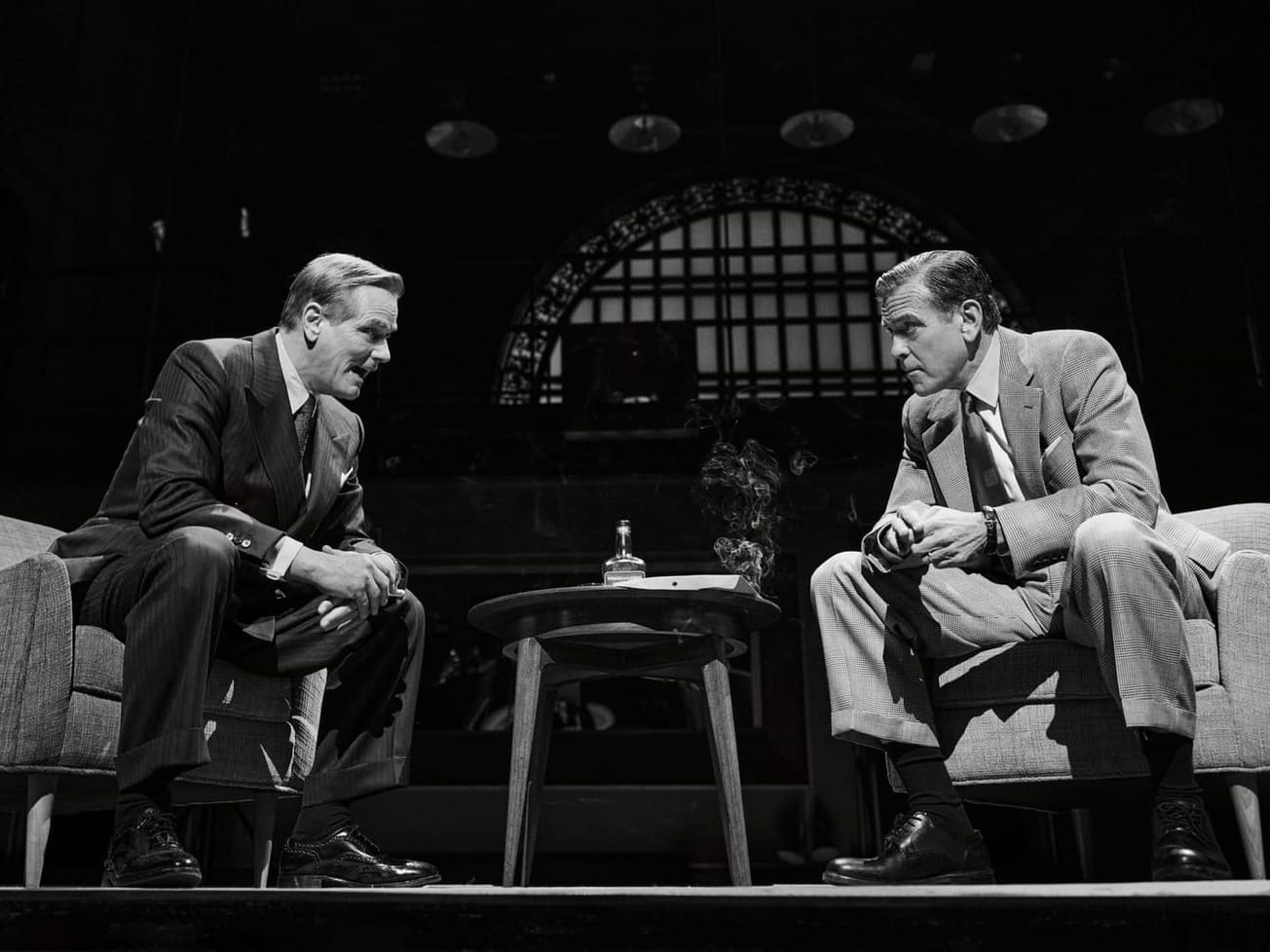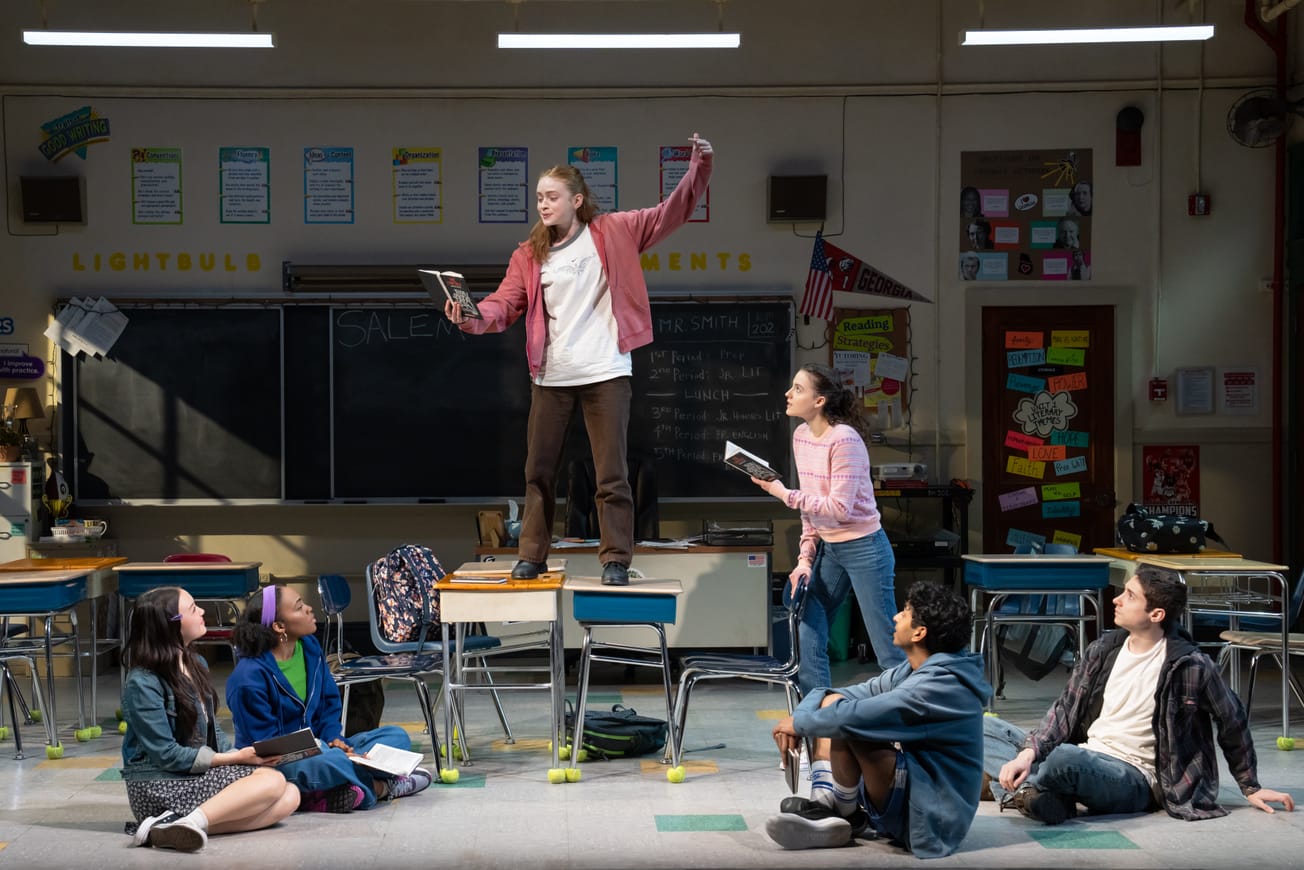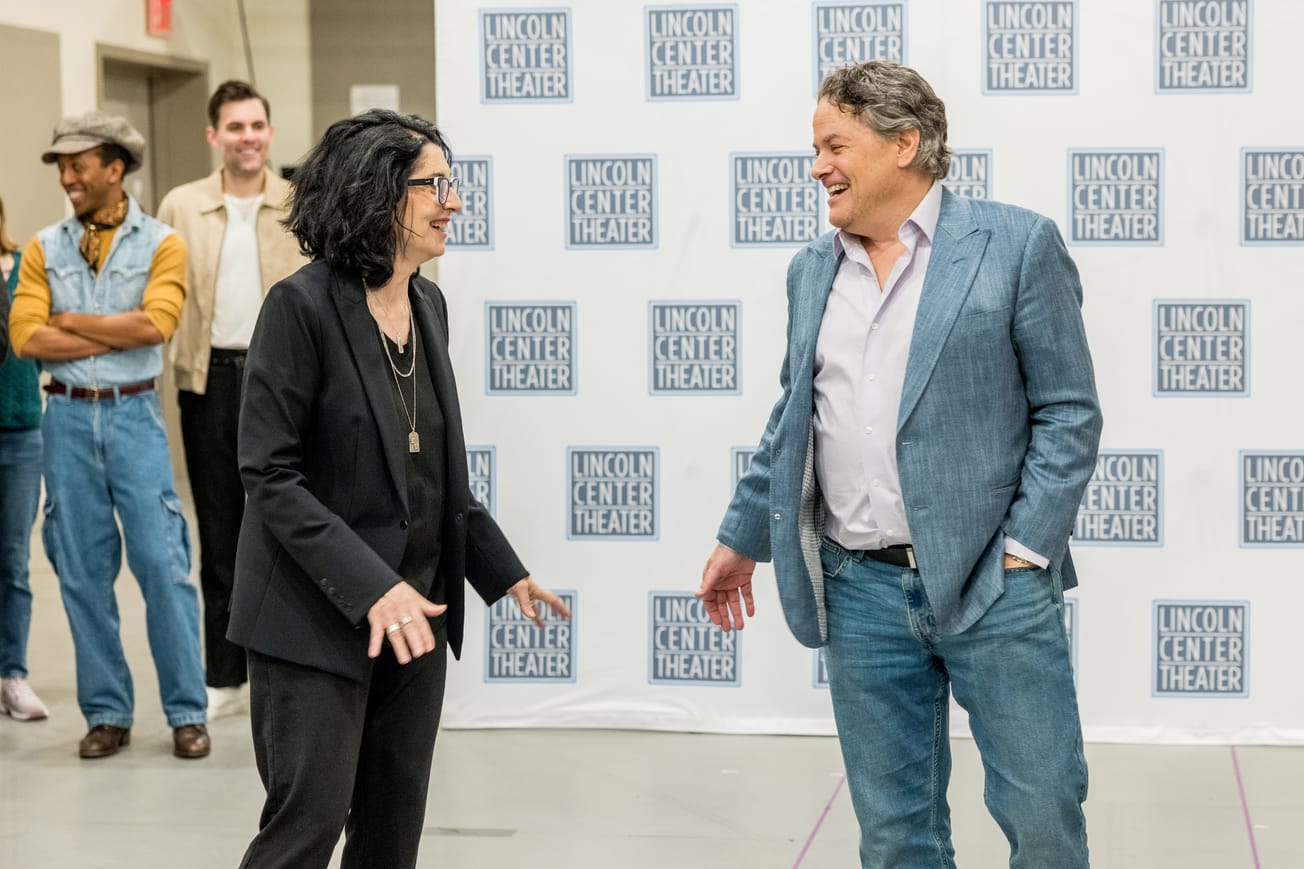Good morning, and welcome to Broadway News’ Broadway Review by Brittani Samuel — our overview of reactions, recommendations and information tied to last night’s Broadway opening of “How to Dance in Ohio.”
RUNDOWN

“If you’re writing about me, then getting to know me should be where you begin.” That’s the mandate Remy (Desmond Luis Edwards), one of “How to Dance in Ohio”’s central autistic characters, delivers to us all. Declarations like these elevate the outwardly charming, but inwardly middling “How to Dance in Ohio” just beyond surface-level affability. With a book and lyrics by Rebekah Greer Melocik and music by Jacob Yandura, inspired by the eponymous award-winning 2015 documentary. The rainbow-laden pop musical alchemizes into a provocation of narrative control and agency.
As group therapy clients at Amigo Family Counseling, Remy and six other autistic young adults prepare for a spring formal as a socialization tool. Edwards along with their fellow principals make history as autistic actors playing autistic roles on Broadway. In keeping with this authenticity, Melocik derives much of her script from the language of the doc’s original subjects. Consequently, she lets the audience in on a kaleidoscope of inner thoughts: the clients’ varying interests, their commitment to routine, their blunt (and often hilarious) rationale and even what triggers an involuntary response like a meltdown. Remy is right; “Ohio” shines brighter with every enticing foray into one of the seven’s psyches. Music should deepen this inquisition; characters can now sing through the difficult interactions that, in the documentary, they struggle to speak through. But the mundanity of Yandura’s indistinguishable score rarely coincides with the emotional ebbs and flows of Melocik’s lyrics. You never get the sense that this needs to be a musical at all. The more physical theatrical elements, like director Sammi Cannold’s merciless overuse of scenic designer Robert Brill’s turntable and choreographer Mayte Natalio’s persistent shoving around of red chairs, also fall short of excitement.
It’s possible that the simplicity, especially sonically, is more of an accessibility pursuit, than an artistic one (a commendable thing). The plain approach reduces chances of any audience member blurring story arcs or becoming overstimulated, but that hypothesis thins when the music of Act 2 grows stylistically bolder. Here, too, miscommunications between neurotypical characters (like Dr. Amigo and his daughter) surge and parallel those of the neurodivergent seven. Melocik offers a helping of “a-ha” moments meant to reiterate the intrinsic sameness of all human beings — but ultimately the show is weaker for it. Because we are indeed not all the same. As the septet repeatedly makes clear: They navigate both a physical and metaphysical world designed without their needs in mind, and are badass for doing so. Ultimately, this cast makes “Ohio” an easy-to-love watershed moment for American theater, and for those of us plodding through the world with only an elementary understanding of autism, it’s also an education. It serves as a reminder that accessibility, not empathy, is the truest example of care in action.


























































